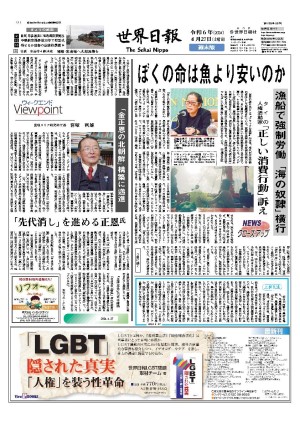中国の攻勢前に連携求めるトランプ、ドゥテルテ両氏
ここはかつて、この地域内で最も強固で、永続的な米国との同盟関係を象徴する場所だった。長い間閉鎖されてきたこの巨大な海軍基地をめぐって今、新たな疑問が浮かび上がっている。両国で戦略的な大転換が進む中、両国関係も混乱し、変化しているからだ。
中国海軍は先月、比近海で米国の潜水機を捕獲したが、それ以前から、間もなく発足するトランプ政権の間に中国との緊張が高まった場合に、スービック湾の軍事施設がどのような変貌を遂げるかをめぐって臆測が飛び交っていた。スービック湾の基地は、262平方マイル(約680平方㌔)の広さを持ち、かつては米国外では最大の米軍施設だった。ポピュリストのドゥテルテ大統領がもたらした変化がどのような影響を及ぼし、かつて堅固だった米比同盟がどのようになっていくかは、過去数十年の間でなかったほど不透明になっている。
政治と外交についてははっきりしないようだが、先月末にこの地域を訪れた限りでは、現地の施設はすぐにでも稼働できる状態にある。
退役海兵隊軍曹のジャック・ウォーカー氏は「すべて整っている。設備は今もある」と話した。ウォーカー氏は、スービック湾や、かつてクラーク空軍基地のあったアンヘレス周辺に駐留した約14万人の退役軍人のうちの1人だ。
この二つの基地は20年以上前に閉鎖されたが、米海軍艦艇は2012年からフィリピンに寄港している。ウォーカー氏は、トランプ氏が、戦略的に重要な南シナ海の激しい領有権争いが展開されている海域で、中国が行っている飛行場建設などの活動をめぐって中国と対決することを決めれば、「すぐに設備は整う」と予測している。
「カラの格納庫がたくさんあり、修復すれば使える」。65歳の元海兵隊員ウォーカー氏は、かつて地元住民が「リトル・アメリカ」と呼んでいた地区の中心部にあるウォーターフロント通り沿いの海岸を見ながらこう語った。
しかし、フィリピン政府内で反植民地感情が高まり、スービックから1992年に撤退した米軍が、短期間にどの程度の規模で再び関与しようとするかを予測することはますます困難になっている。
アナリストらは、米比関係の未来、米国がこの地域に本格的に駐留するようになるかどうかは、今のところ分からないと指摘している。トランプ次期大統領が、同じように予測が困難なドゥテルテ比大統領と、協力するのか、対立するのかが予測できないからだ。
独自路線を行く71歳のドゥテルテ氏は、長く州知事を務め、自らつくり出した差別的なポピュリズムの波に乗って昨年、権力を手にした。トランプ氏とドゥテルテ氏は互いによく似ていて、歯に衣着せぬアウトサイダーであり、いずれ意気投合し、米軍が大々的にフィリピンに戻ってくることで合意を交わすと考える人々も現地にはいる。
55歳のタクシー運転手ジョジョ・ヌイレスさんは「ドゥテルテ、トランプ両氏は同じだ。米国とフィリピンが再び、緊密な関係を築くと思うのはそのためだ」と話した。
「これに関しては120%自信がある。ドゥテルテ氏はダーティーハリーのようなスタイルを持っている。とてもいい。トランプ氏もスタイルは同じで、米国のドゥテルテのようだ」
だが、大失敗につながると考える人々もいる。政治的手腕がほぼ未知数で、扇情的なレトリックと激しい政策を好む二人は、世界で最も経済的に動きの激しいこの地域で影響力を拡大することに力を注ぎ、台頭している中国を前に方向が定まっていない。
(1月2日付)
Philippines’ Duterte seek connection as China looms
SUBIC BAY, Philippines - It was once the rock-solid symbol of one of the deepest and most enduring U.S. alliances in the region. Today this massive but long-shuttered U.S. Navy base is just one more question mark in a confused and evolving relationship at a time of major strategic changes in both Manila and Washington.
But even before China’s navy seized an American underwater drone near here last month, speculation swirled over how the Subic Bay military base - a 262-square-mile expanse that at one time was America’s largest U.S. military installation outside the borders of the U.S. - might be transformed once again if tensions with China turn truly hot during the soon-to-be-installed Trump administration. Factor in the changes already wrought here by populist President Rodrigo Duterte, and the future of the once equally rock-solid U.S.-Philippines alliance is as uncertain as at any time in decades.
The politics and diplomacy may be murky, but, based on a visit to the area late last month, the infrastructure here is ready to roll.
“Everything’s in place; the facilities still exist,” says Jack Walker, a retired Marine Corps sergeant among the some 14,000 American veterans who reside around Subic and nearby Angeles city, the former home of Clark Air Base.
While both bases closed more than two decades ago, U.S. Navy ships have been making port visits here since 2012, and Mr. Walker predicts things “could be quickly repopulated” if Mr. Trump decides to confront China over its airstrip construction and other activities in the heavily contested water of the strategic South China Sea.
“There’s empty hangars galore that could be refurbished,” the 65-year-old former Marine noted, looking out at the surf along Waterfront Road in the heart of what locals here used to call “Little America.”
But the extent to which U.S. forces, whose 1992 departure from Subic came amid a flurry of anti-colonialist fervor in the Filipino government, might suddenly try to re-engage on a mass scale here - or anywhere else in the Philippines, for that matter - has become an increasingly difficult thing to forecast.
Analysts say the future of U.S.-Philippines relations, and quite possibly of America’s overall footprint in the region, now hinges on a huge unknown: Will incoming President Donald Trump get along or clash with his equally unpredictable Filipino counterpart, Mr. Duterte?
Some here believe Mr. Trump and Mr. Duterte, a 71-year-old maverick and longtime provincial mayor who rode his own wave of politically incorrect populism to power last year, are two peas in a pod - tell-it-like-it-is outsiders who will naturally click and cut a deal for U.S. forces to return to the Philippines in a big way.
“Duterte and Trump are the same; that’s why I think the U.S. and the Philippines will tie up again with close relations,” said Jo-Jo Nuyles, a 55-year-old taxi driver here.
“I’m 120 percent sure about this. Duterte has a style like Dirty Harry. It’s a very nice style. Trump has the same style. He is like the U.S. Duterte.”
Others say it’s a recipe for disaster: two largely untested leaders with a penchant for incendiary rhetoric and sharp policy swerves facing a rising China singularly focused on expanding its sphere of influence in the world’s most dynamic economic region.
January 2, 2017





